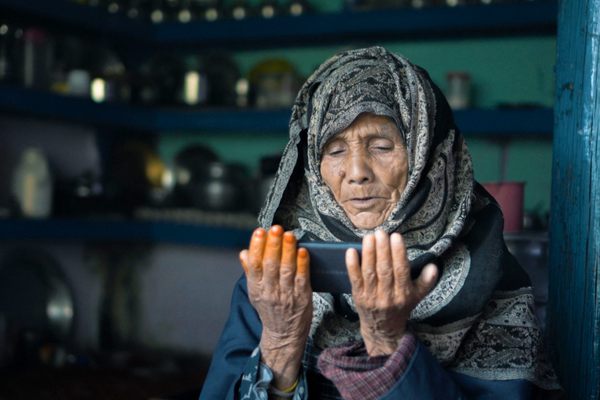England’s Forgotten Pet Massacre of 1939
Why were hundreds of thousands of pets put to sleep in London?

In the first week of September of 1939, London’s animal shelters were overflowing with patients. Lines of pet-owners, all waiting to euthanize their cats, dogs, birds, and rabbits, stretched out the door, in some cases wrapping around the block for nearly a mile. But none of the animals were dying. In fact, none of them were even sick. The distraught Londoners had brought them to do what they thought was the humane thing: Spare their pets from the atrocities—and food shortages—of the impending world war.
The British Pet Massacre of 1939 is a horrific, if not seemingly impossible, twist in the narrative often told about the “People’s War.” In fact, animal cruelty was often used to embody the cruelest reaches of fascism. One piece in the Daily Mirror ridiculed a German ambassador for abandoning his dog when fleeing the embassy, stating “[t]hat’s what Britain is fighting—the inherent brutality of Nazi-ism, that has no justice or human feeling—even for its pets.”
Instead, England championed its brave-hearted canine war heroes. At the Ilford Pet Cemetery, you’ll find headstones commemorating World War II animals such as Simon, the beloved cat who received the Blue Cross and the PDSA Dickin Medal for his Naval service. But, according to author and historian Hilda Kean, buried alongside these celebrated critters are thousands of pets who were killed before a single bomb had been dropped. “The PDSA grounds might well be defined as a site of memory,” Kean writes, “only certain, individual, animals, whose exploits are narrativised to fit within the notion of a ‘good’ war are actually remembered.” And until recently, that darker history has remained, largely, underground.

The National Air Raid Precautions Animals Committee (NARPAC) had estimated that England was then home to six to seven million dogs and cats, 56 million poultry, and more than 37 million farm animals—about twice as many domestic animals as there were people in the country. War not only meant the potential for air raids on the homeland, but also for rationing and major food shortages. In anticipation of wartime conditions and sparse resources, NARPAC issued an advisory pamphlet to animal owners encouraging them to send their animals to the countryside. But if the animals couldn’t be placed into someone else’s care? The pamphlet suggested it would be “kindest to have them destroyed.”
So when, on September 3, 1939, Neville Chamberlain publicly announced that Britain would be going to war, thousands of Londoners marched dutifully to their local clinic to do what they thought was right. Veterinarians worked overtime to meet the demand. The National Canine Defense League allegedly ran out of chloroform. A 1939 report of the mass euthanasia in Animal World later recounted that “the work of destroying animals was continued, day and night.”

According to Kean, this hadn’t been NARPAC’s intention—they had given specific instructions for agricultural animals, but had omitted any provisions for domestic pets. In fact, in the following weeks, they issued a notice stating “those who are staying at home should not have their animals destroyed.” But it was too late. Within the first week of the war, around 400,000 animals had been killed.
But the bigger question remains: If the state wasn’t wholly responsible for the massacre, how had hundreds of thousands of pet owners come to carry this out? Perhaps it wasn’t just to protect themselves and their families from food shortages, but also to shelter their pets from the atrocities of war.
According to Kean, the role and perception of pets had changed in the decades leading up to World War II. By 1930, dogs were required by law to be collared and taxed, and expected to be trained and leashed, bringing them closer to—and making them increasingly reliant on—their owners. Dogs in particular began to lose their autonomy in pet owners’ eyes, morphing from an independent mammal to man’s best friend.

Those who had lived through World War I knew what a war-torn country looked like, and they never wanted to live in such conditions again. As pets became increasingly integrated into families, it became harder for owners to envision them fending for themselves—or failing to do so—once the war started. According to Kean, many who had lived through World War I stocked up on poison, claiming they’d rather see their children dead than put them through wartime conditions. And perhaps, Kean posits, this was enacted, instead, on their animals. “When war came, however, no mass murders of children took place,” writes Colin Dickey in the Los Angeles Review of Books. “Instead, it appears, many people sublimated this impulse toward mercy killing by exercising it on their animals instead.”
In the end, many of the surviving pets didn’t starve—but rather became even further enmeshed into their human families. While there was no official ration for pets, human meals were shared. Inevitably, scraps of meat would be slipped to the family pup.
Fully understanding the pet cull, perhaps, requires a deep dive into the collective psyche of a nation on the brink of war. But in some ways, the Ilford Cemetery makes clear the collective amnesia that many post-war nations tend to adopt—remembering the good, forgetting the atrocities, and forging a cleaner, more palatable narrative—in order to carry on.
Gastro Obscura covers the world’s most wondrous food and drink.
Sign up for our email, delivered twice a week.






































Follow us on Twitter to get the latest on the world's hidden wonders.
Like us on Facebook to get the latest on the world's hidden wonders.
Follow us on Twitter Like us on Facebook